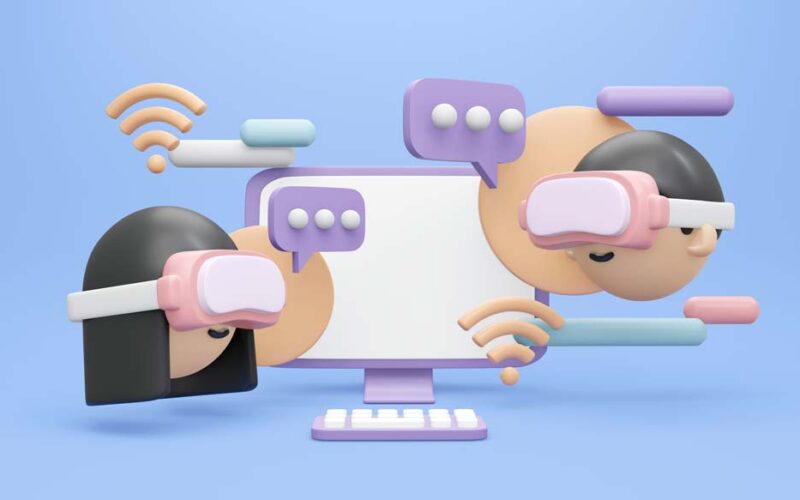What exactly is the metaverse? It can often be referred to as ‘the future’ in the present world, but what does that entail? The best comparison we have to today’s metaverse would be the discussion of what ‘the internet’ would be back in the 1970s. The internet was the world’s first step toward a revolutionary new form of communication. Generations have passed, and now we have reached another point of revolution, but this time in the form of the metaverse. There are alternative names for the metaverse such as the ‘mirror world,’ ‘spacial internet,’ or more simply, ‘cyberspace.’ Essentially, the metaverse will be an alternate or virtual reality (AR/VR technology) hub space which you would access via a VR headset with motion controllers and a microphone that allow you to interact with the virtual world as well as the people inhabiting the space. The alternate reality portion comes from its direct integration with the real world. So, it’s a 3D virtual environment with a seemingly limitless potential of possibilities. However, this writing in specific will focus more on the potential for a greater learning experience through the metaverse.
When the words ‘virtual learning’ or ‘remote learning’ appear, you may think of services like Zoom or Webex. However, the metaverse is still in concept and nothing has been set in stone as far as a direct educational gateway goes. The main issue with our current remote learning is how easy it is to be distracted while on these devices. For instance, say you are attending a lecture via a laptop, but later in the lecture, you get an email or message notification. For many people, this kind of distraction can easily be avoided. For some, it could prove troublesome, as it takes a certain level of self-control. A person with ADHD would struggle even more to ignore this simple distraction. Maybe it’s also the fact that you can still attend lectures via mobile devices while off doing any real-world activity. All these contributing factors add up and make the current virtual learning system very difficult. With the metaverse, though, it should bring a much more sophisticated method of online/virtual learning.
When thinking of attending class through VR, a virtual classroom environment comes into mind. In contrast, attending a lecture from a laptop has plenty of contributing factors that could distract you. However, attending class from a VR headset would require you to sort of “prepare” your physical environment to limit any distractions. A good example is clearing any potential hazards or objects in your physical space to ensure a safe and less distracting environment. The sensors on these VR headsets will detect whether you have the headset on or off; this means that you can’t haphazardly attend your lectures without a strong level of active participation. Both teachers and students will be inhabiting the same virtual space, allowing for the best simulated student-teacher connection. While there isn’t anything that beats old-fashioned in-person classes currently, utilizing today’s advanced VR technology could open a huge gateway for education within the metaverse.
References
Ravenscraft, E. (2021, November 25). What is the metaverse, exactly? Wired. Retrieved March 4, 2022, from https://www.wired.com/story/what-is-the-metaverse/
Dishman, L. (2022, February 10). The metaverse can provide a whole new opportunity for education. Here’s what to consider. Fast Company. Retrieved March 4, 2022, from https://www.fastcompany.com/90718919/the-metaverse-can-provide-a-whole-new-opportunity-for-education-heres-what-to-consider
Ribeiro, R. (2021, November 16). ‘metaverse’ and the educational potential: World of better learning. World of Better Learning | Cambridge University Press. Retrieved March 3, 2022, from https://www.cambridge.org/elt/blog/2021/11/15/metaverse-educational-potential/
